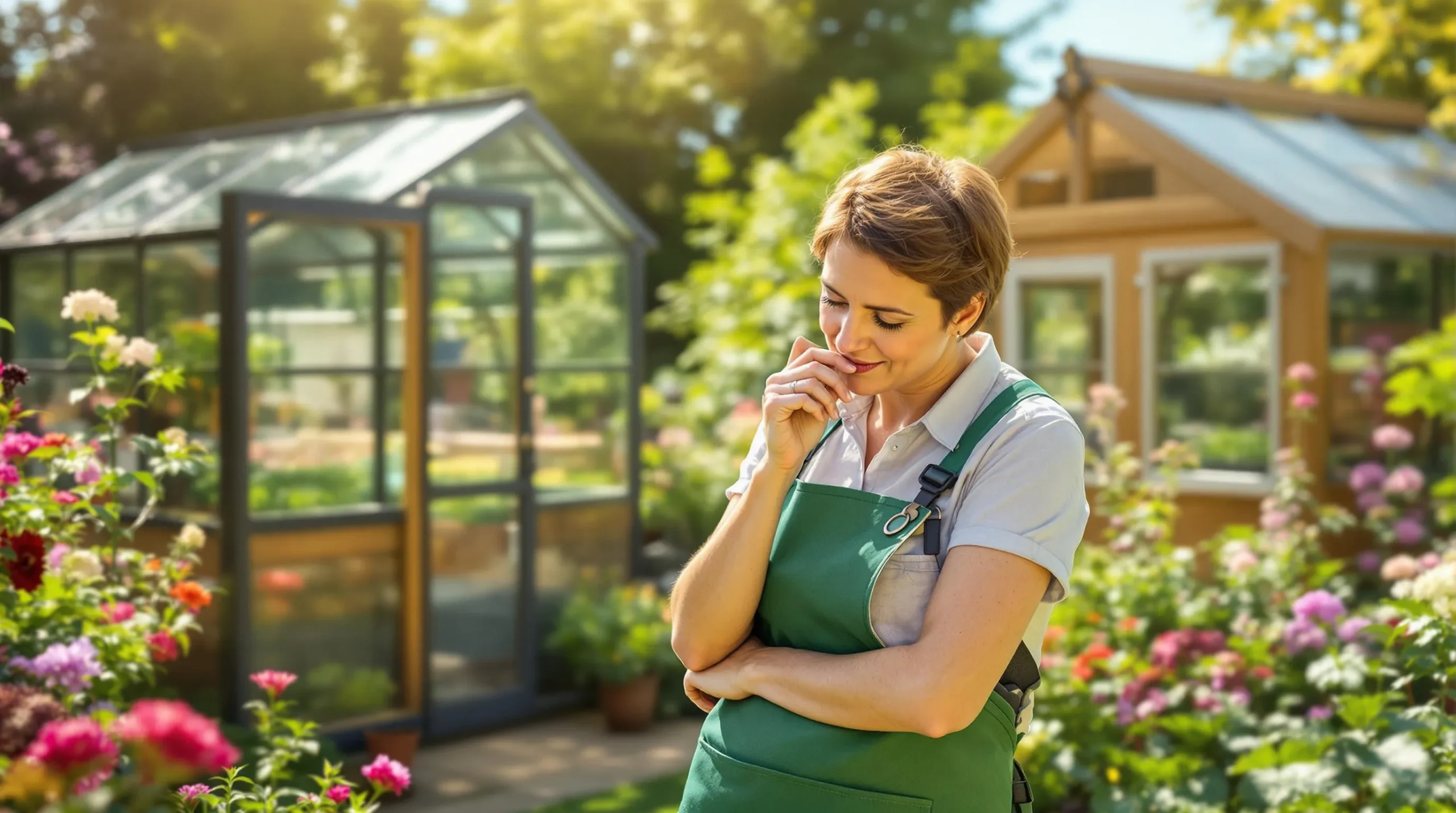
How to Choose Your First Greenhouse: A Complete Beginner’s Guide for 2025
Learn how to choose your perfect first greenhouse with our expert guide. Discover size, materials, and features to extend your growing season by 2-3 months.

Hydroponic farming is revolutionising modern agriculture, with polycarbonate greenhouses leading the way in innovative growing solutions. Made from durable yet lightweight thermoplastic, these structures offer excellent light transmission like glass but with added strength and weather resistance.
For year-round cultivation, combining hydroponic systems with a polycarbonate greenhouse creates the perfect environment. These greenhouses support customisable features such as drip irrigation, climate control, and LED grow lights, all working together to optimise plant growth. With superior insulation and UV protection, polycarbonate greenhouses provide a stable, efficient space to enhance and protect your hydroponic setup.
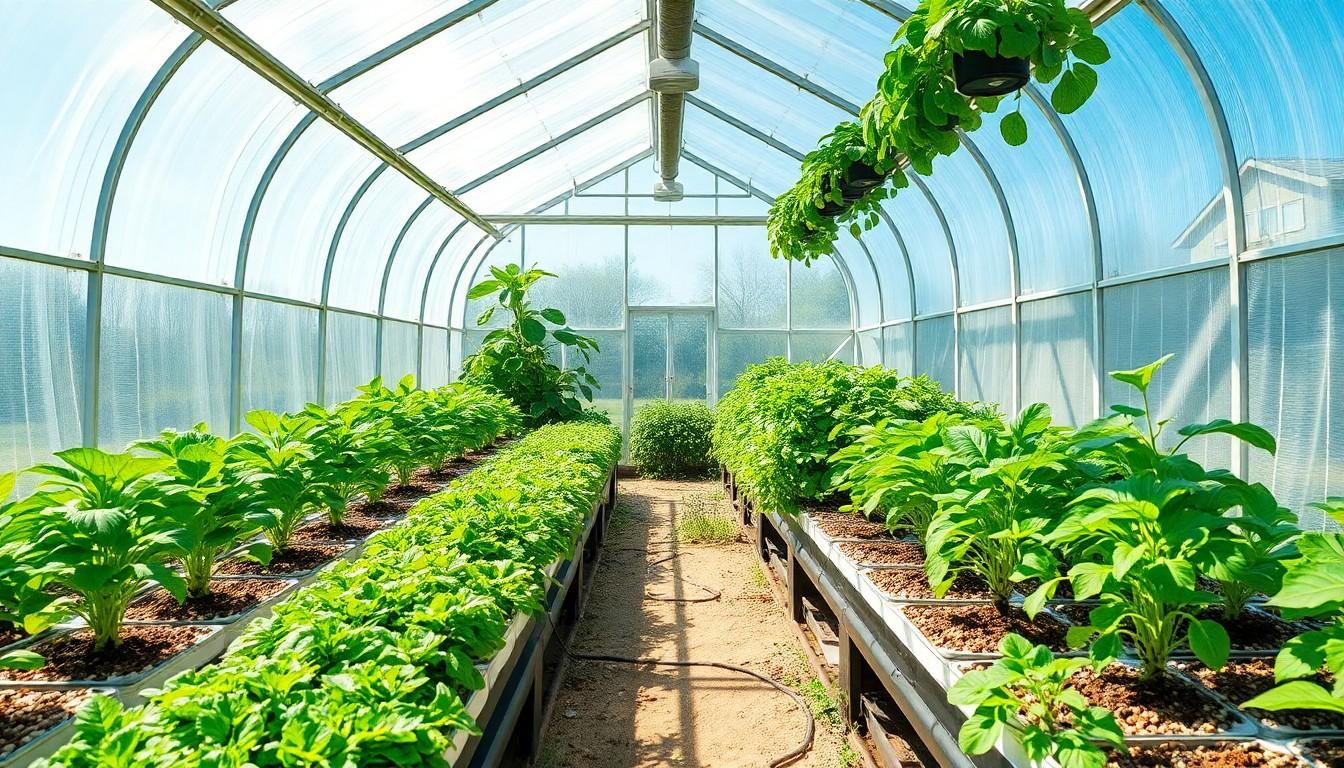
Hydroponic systems in polycarbonate greenhouses require specific components to function effectively. Each element serves a distinct purpose in supporting plant growth without soil.
The growing medium replaces traditional soil in hydroponic systems. Here are the primary options:
| Delivery Method | Water Usage | Maintenance Level | Space Efficiency |
|---|---|---|---|
| DWC | High | Low | Medium |
| Drip Systems | Medium | Medium | High |
| NFT | Low | Medium | High |
| Ebb and Flow | Medium | Low | Medium |
| Aeroponics | Low | High | High |
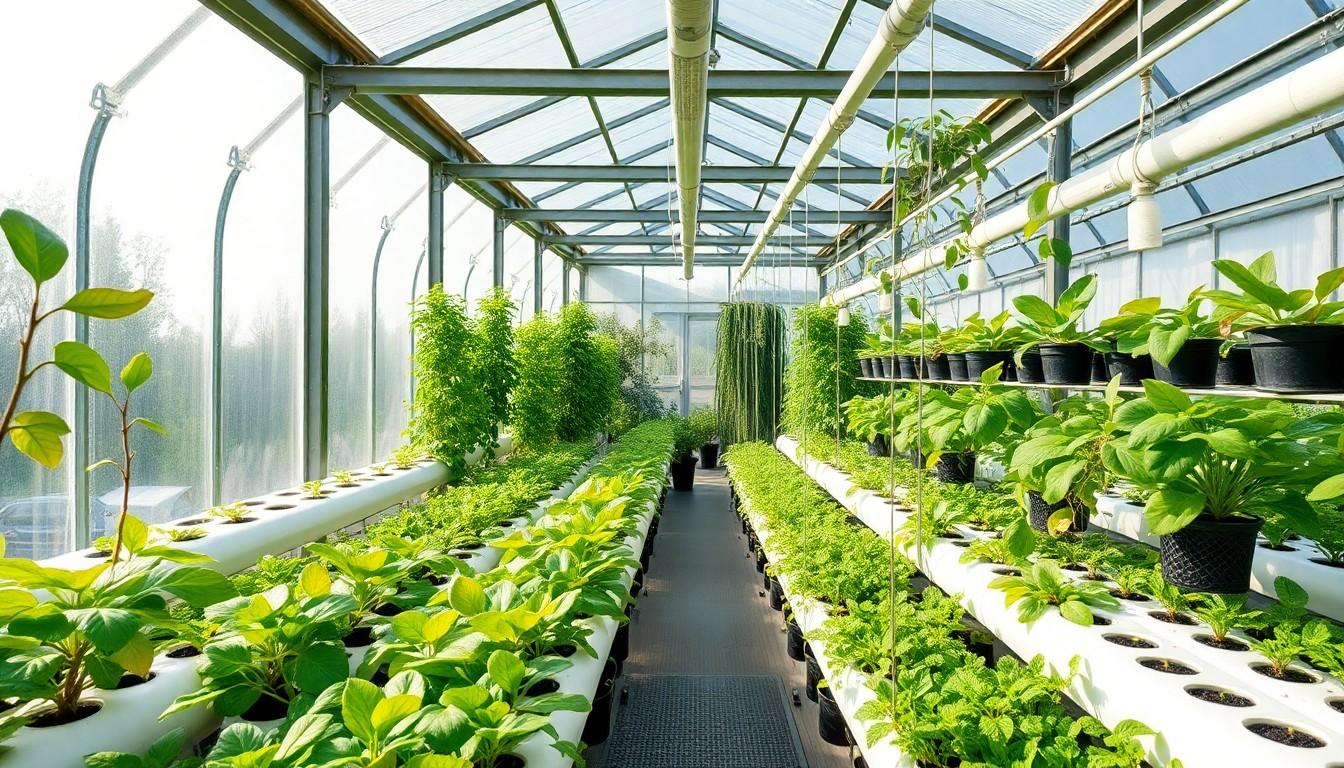
Hydroponic systems in polycarbonate greenhouses offer diverse growing methods for different plant types. Each system provides specific advantages for plant growth, nutrient delivery and space utilisation.
NFT systems create a continuous flow of nutrient solution through shallow channels. The plant roots remain suspended in this thin film of water, receiving essential nutrients while maintaining oxygen exposure.
Key features of NFT systems:
Deep Water Culture (DWC) suspends plants in nutrient-rich water using net pots and air stones. The system maintains constant oxygenation through air pumps, creating ideal conditions for robust root development.
DWC system components:
Drip systems deliver nutrient solution directly to plant roots through individual drippers. The solution flows through tubes to each plant, providing precise nutrient control and water distribution.
Drip system advantages:
Technical specifications for hydroponic systems:
| System Type | Water Usage (L/day)* | Maintenance Level | Space Efficiency |
|---|---|---|---|
| NFT | 20-30 | Medium | High |
| DWC | 30-40 | Low | Medium |
| Drip | 25-35 | High | High |
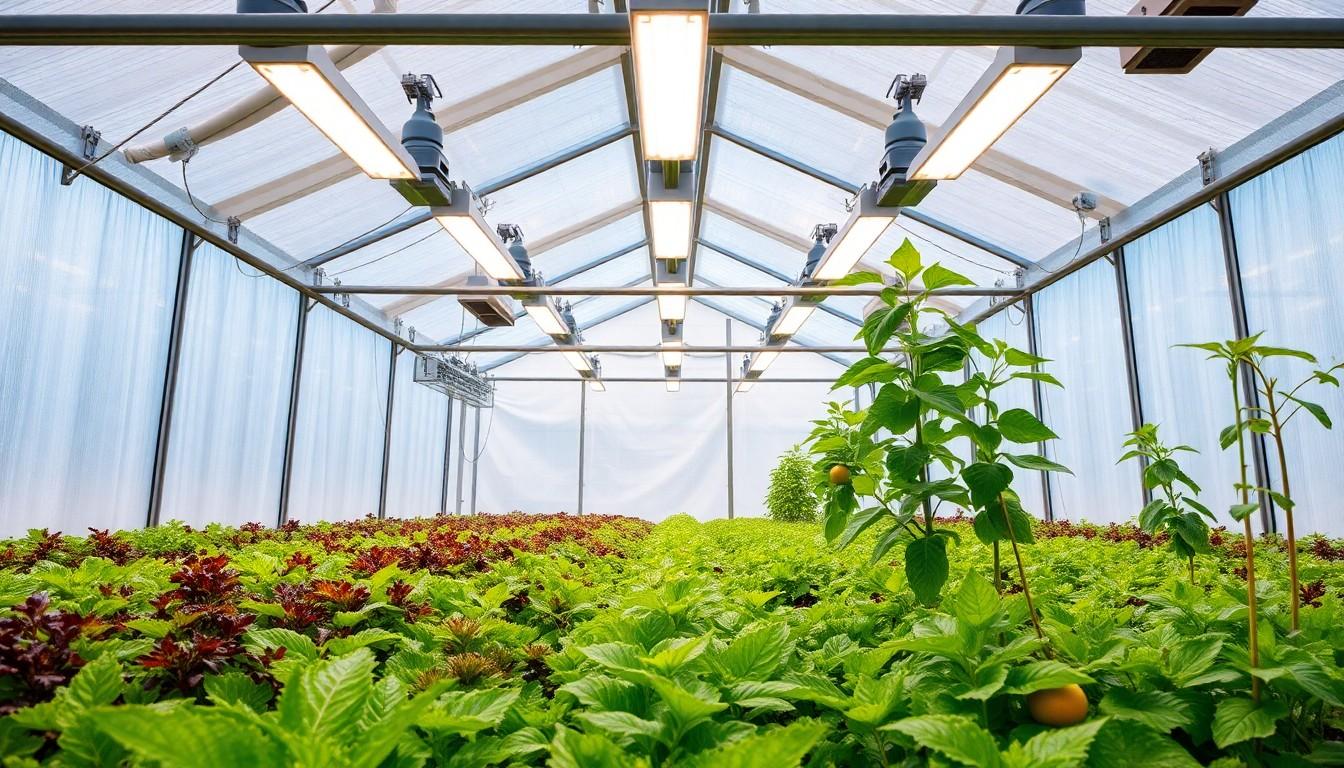
Environmental control systems regulate temperature, humidity, lighting and ventilation in hydroponic greenhouses. These integrated systems create optimal growing conditions through automated monitoring and adjustment of key environmental factors.
Temperature control directly impacts plant growth rates and nutrient absorption in hydroponic systems. The optimal temperature range for most hydroponic crops is 20-25°C during the day and 16-20°C at night.
Key temperature control components include:
| Temperature Requirements | Day (°C) | Night (°C) |
|---|---|---|
| Leafy Greens | 20-24 | 16-18 |
| Fruiting Plants | 22-26 | 18-20 |
| Root Vegetables | 18-22 | 15-17 |
Humidity control prevents fungal diseases and optimises transpiration in hydroponic crops. The ideal relative humidity range is 60-70% for most plants.
Essential humidity management features:
| Ventilation Metrics | Recommended Values |
|---|---|
| Air Changes/Hour | 4-6 |
| Fan Capacity (m³/h) | 450/100m² |
| Humidity Range (%) | 60-70 |
| Air Speed (m/s) | 0.5-1.0 |
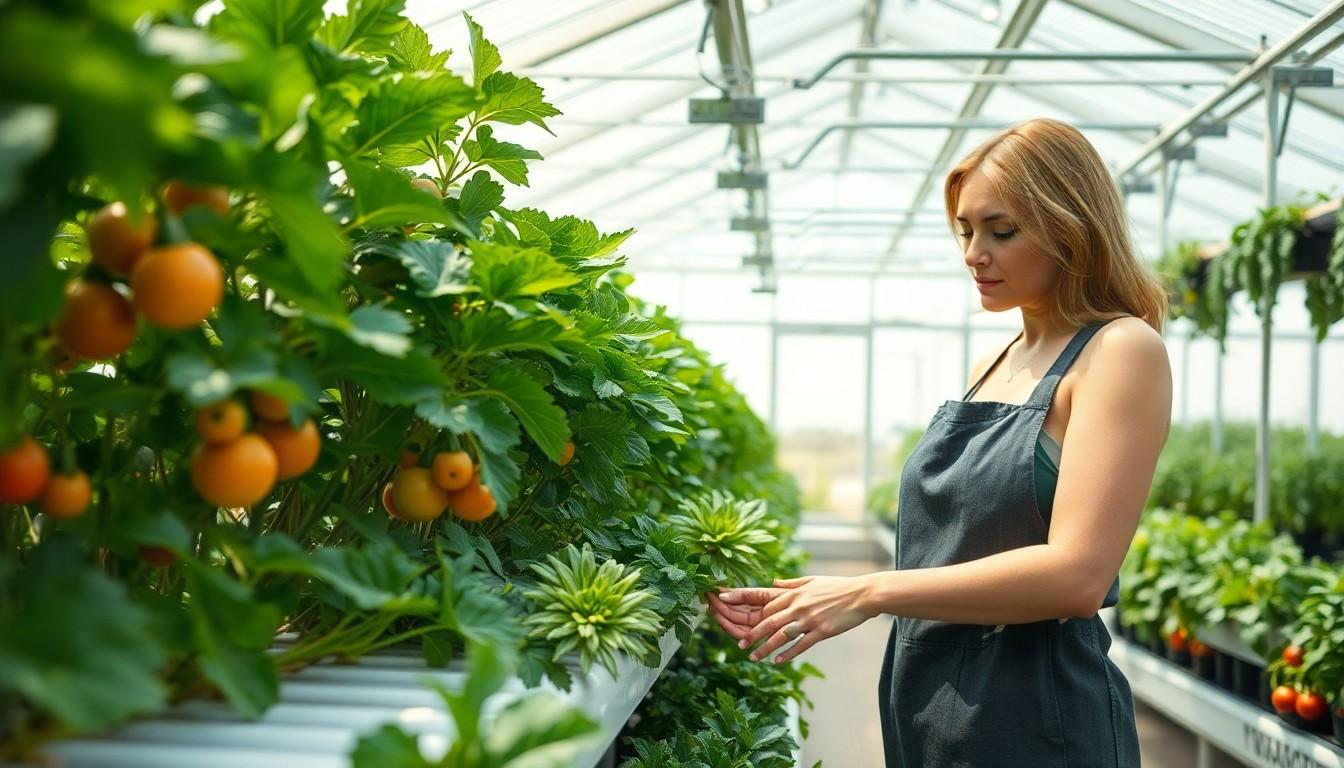
Hydroponic systems in polycarbonate greenhouses support a diverse range of crops through controlled environments and precise nutrient delivery. The success of hydroponic growing depends on selecting appropriate plants and maintaining optimal growing conditions.
Leafy greens thrive in hydroponic systems due to their quick growth cycles and minimal space requirements. Here are the top performing crops:
Proper nutrient management forms the foundation of successful hydroponic growing. Key strategies include:
| Plant Type | pH Range | EC Range (mS/cm) |
|---|---|---|
| Leafy Greens | 5.5-6.5 | 1.0-1.6 |
| Fruiting Plants | 5.8-6.2 | 2.0-3.5 |
| Herbs | 5.5-6.0 | 1.0-1.8 |
The nutrient solution requires regular testing and adjustments to maintain optimal growing conditions. Automated dosing systems help maintain consistent nutrient levels while reducing manual monitoring requirements.
Hydroponic systems in polycarbonate greenhouses require specific maintenance practices to ensure optimal plant growth. Regular upkeep focuses on two key areas: cleaning protocols and system monitoring procedures.
Clean hydroponic systems every 2-4 weeks to prevent pathogen growth and algae buildup. The cleaning schedule includes:
Monitor these water parameters daily:
| Parameter | Optimal Range |
|---|---|
| pH Level | 5.5-6.5 |
| EC Level | 1.2-2.4 mS/cm |
| Water Temperature | 18-22°C |
Advanced monitoring systems track essential growing conditions through:
| Parameter | Frequency |
|---|---|
| Nutrient Levels | 2x daily |
| pH Readings | 3x daily |
| Water Temperature | 4x daily |
| System Pressure | 2x daily |
Starting your hydroponic journey in a polycarbonate greenhouse opens up endless possibilities for year-round growing. You’ll benefit from the perfect blend of durability efficient light transmission and optimal growing conditions that these modern structures provide.
By choosing the right hydroponic system monitoring environmental conditions and maintaining proper nutrient levels you’ll create an ideal environment for your plants to thrive. The combination of advanced technology and controlled growing conditions puts successful crop production within your reach.
Whether you’re a commercial grower or a passionate hobbyist polycarbonate greenhouses with hydroponic systems offer a sustainable and profitable solution for modern agriculture. Your investment in this innovative growing method will reward you with higher yields better crop quality and improved resource efficiency.
Polycarbonate greenhouses offer excellent light transmission (80-90%), UV protection, and superior insulation. They are lightweight, shatter-resistant, and flame-resistant, with a 10-year warranty against discolouration. These greenhouses are cost-effective, require low maintenance, and provide optimal growing conditions for both commercial and hobby growers.
Most hydroponic crops thrive in temperatures between 20-25°C during the day and 16-20°C at night. This temperature range promotes optimal plant growth and development whilst preventing stress-related issues. Maintaining consistent temperatures is crucial for successful hydroponic cultivation.
Fast-growing leafy greens like lettuce, spinach, kale, and basil are ideal for hydroponic systems. Fruiting vegetables such as tomatoes, peppers, cucumbers, and green beans also perform well. These plants thrive in controlled environments and can provide year-round harvests when properly maintained.
Hydroponic systems require cleaning every 2-4 weeks to prevent pathogen growth and algae buildup. Components should be sanitised after each crop cycle, and filters should be checked regularly for blockages. Daily monitoring of water parameters is essential for optimal system performance.
The optimal relative humidity range for most hydroponic plants is 60-70%. This level helps prevent fungal diseases and optimises plant transpiration. Proper humidity management requires dehumidification systems, circulation fans, and humidity sensors for consistent monitoring and control.
Several growing media options are available, including rockwool plugs, clay pellets, coconut coir, perlite, and vermiculite. Each medium serves a specific purpose in supporting plant growth without soil, offering different water retention and aeration properties for optimal root development.
Daily monitoring of nutrient solutions is crucial. Check pH levels, electrical conductivity (EC), water temperature, and nutrient concentration regularly. Automated dosing systems can help maintain consistency and reduce manual monitoring efforts, ensuring optimal growing conditions.
Regular maintenance includes cleaning panels, checking seals, and ensuring proper ventilation system function. Inspect the structure for damage, tighten any loose fittings, and clear gutters of debris. Annual maintenance helps extend the greenhouse’s lifespan and maintain optimal growing conditions.

Learn how to choose your perfect first greenhouse with our expert guide. Discover size, materials, and features to extend your growing season by 2-3 months.
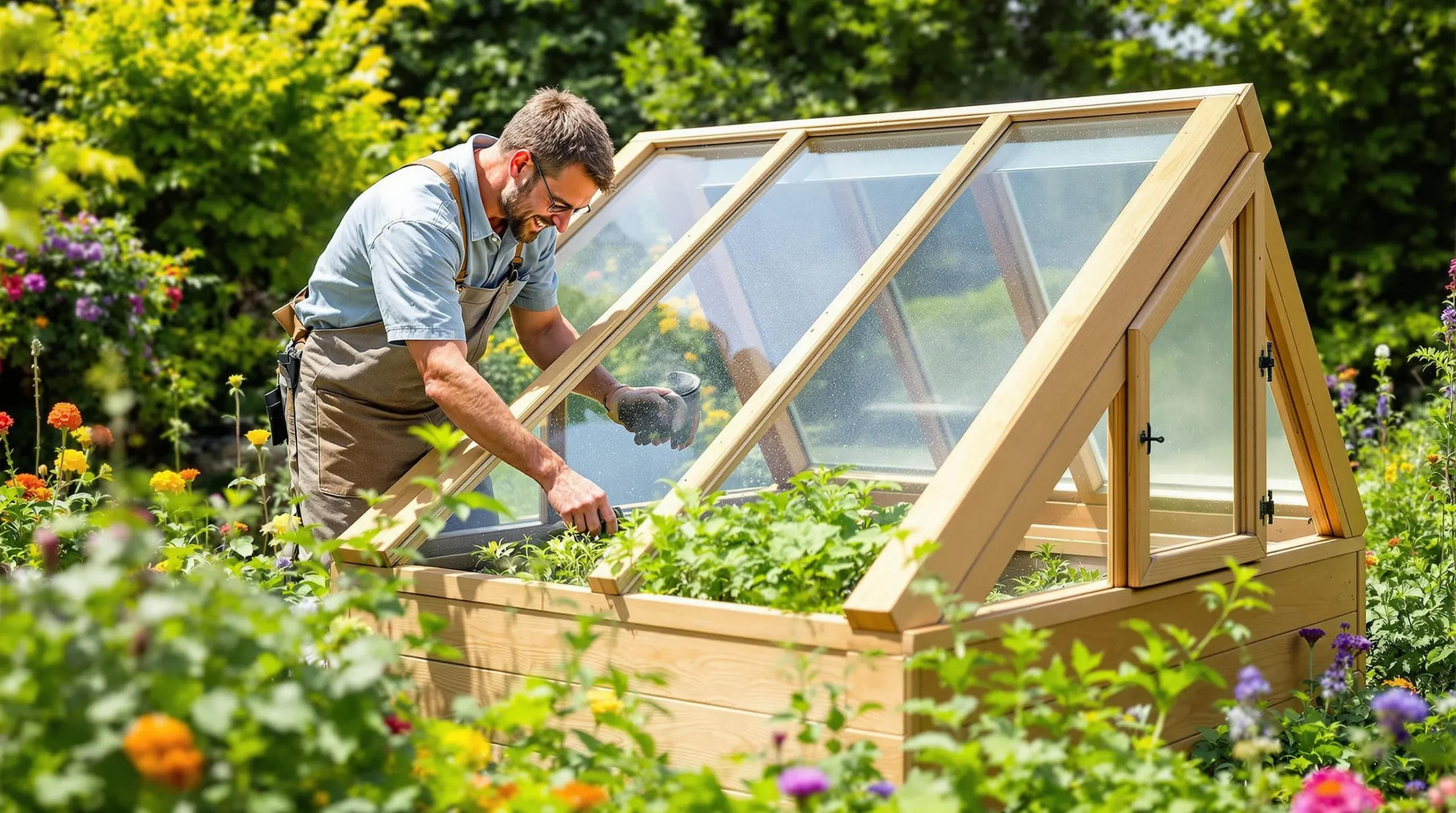
Learn how to make a cold frame to extend your growing season, protect plants in winter, and grow seedlings all year. Simple, cost-effective, and DIY-friendly!